Does the World Martial Arts Tournament Announcer Have an Official Name
This article is nigh the first game in the serial. For the series as a whole, run into Street Fighter serial.
Street Fighter (also more than commonly known equally Street Fighter I ) is a 1987 arcade game developed by Capcom. Information technology is the first fighting game produced by the company and the very start game in the Street Fighter serial.
While it did not attain the same popularity as its sequels when information technology was first released, the original Street Fighter introduced some of the conventions made standard in later games, such as set on buttons and special command-based techniques. A port for the TurboGrafx-CD was released under the title Fighting Street in 1988.
Contents
- i Gameplay
- 2 Characters
- 2.1 Actor Characters
- ii.2 Opponent Characters
- 3 Development
- 4 Arcade versions
- 5 Ports
- 6 Gallery
- half dozen.ane Promotional Art and Packaging
- vi.2 Official Art
- 6.3 Screenshots
- seven Videos
- 8 Trivia
- 9 External Links
- 10 References
Gameplay [ ]
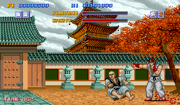
Ryu vs. Retsu.
The role player competes in a series of i-on-i matches confronting a series of computer-controlled opponents or in a unmarried match confronting another role player. Each match is a serial of rounds in which the player must defeat their opponent in less than 30 seconds. If a match ends earlier a fighter is knocked out, and then the fighter with the greater corporeality of hit points left volition be alleged the round'southward winner. The player must win two rounds in order to defeat their opponent and go on to the side by side battle. If the third circular ends in a tie, and then the computer-controlled opponent will win by default or both players will lose. During the single-thespian mode, the player tin can go on after losing and fight against the opponent they lost the friction match with. Besides, a 2d player tin interrupt a single-player friction match and claiming the other role player to a friction match.
The game controls consist of an eight-directional joystick and depending on the cabinet: vi attack buttons, iii dial buttons and iii boot buttons of differing speed and force; or two mechatronic pads for punches and kicks that determined the strength level of the role player's attacks. The player uses the joystick to move towards or abroad from an opponent, as well to spring, crouch and defend confronting an opponent'southward attacks. Past using the attack buttons/pads in combination with the joystick, the player can perform a multifariousness of attacks from standing, jumping or crouching positions. There were besides three special techniques, performed past inputting a specific directional-based command and button combination. These techniques were the Hadoken, the Shoryuken and the Tatsumaki Senpukyaku. Unlike the subsequent Street Fighter sequels and other later fighting games, the specific commands for these special moves were not given in the arcade game's instruction card, which instead encouraged the actor to discover these techniques on their own.
Characters [ ]
Player Characters [ ]
The role player takes control of a Japanese martial artist named Ryu, who goes on a journey to prove his strength.[ane] [2] The second player takes control of Ryu's erstwhile training partner and rival Ken Masters, who challenges Ryu in the game'south 2-player matches. Ordinarily the player takes command of Ryu in the single-histrion mode, however, if the player controlling Ken defeats Ryu in a 2-player match, then the winning player volition play the remainder of the game as Ken. The differences between the characters are mainly aesthetic, every bit both of them take the same moves and techniques.
- "I wish you skilful luck!"
- —Defeated Ryu or Ken in 2 Player Vs.
| Proper noun | Country | Appearance | Notes |
|---|---|---|---|
| Ryu | Nippon | |
|
| Ken Masters | United States |  |
|
Opponent Characters [ ]
- "What strength!! Only don't forget in that location are many guys like you all over the world."
- —The Player'southward Defeated Opponent
- "You've got a lot to learn earlier you lot can defeat me. Try again, kiddo."
- —The Thespian'south Winning Opponent
The single-actor mode consists of a series of battles against 10 opponents from five different nations. At the beginning of the game, the player tin choose the country where their outset match will accept place, with available choices of Japan or the United States, besides as China or England, depending on the DIP switch setting. The actor will so proceed to fight against the nation'south two representing opponents before proceeding to the adjacent country. In add-on to the regular battles, there also 2 types of bonus games in which players can compete for additional points, including table-breaking and brick-breaking bonus games. Afterward defeating the initial eight, the player will travel to Thailand to fight against the last two opponents.
| Land | Proper name | Appearance | Notes |
|---|---|---|---|
| Japan | Retsu |  | Retsu is a Shorinji Kempo teacher who was excommunicated for using forbidden moves while getting into street fights. |
| Geki |  | Geki is an anonymous ninja who fights with a talon, shurikens and ninjutsu illusions. | |
| U.s. | Joe |  | Joe was formerly an underground martial art champion before his time as an outlaw forced him on the run. |
| Mike |  | Mike is a former heavyweight pugilist who in one case killed an opponent in the ring and did time in jail for robbery, where he learned the art of boxing. | |
| China | Lee |  | Lee is a mysterious Bajiquan expert who enters the tour to put Chinese Kung-Fu back on the mainstream. |
| Gen |  | Gen is an elderly professional assassin who has developed his own murderous Kung-Fu style and sets out to find worthy challengers. | |
| England | Baboon |  | Birdie is a giant bouncer who uses a combination of wrestling and boxing techniques, this punker is dangerous when jumping in mid-air. |
| Eagle |  | Hawkeye is a boujutsu skilful who is the hired bodyguard of a wealthy family who is rivals with Sagat but was previously defeated by the latter. His weapon of option is fighting with two Escrima/Kali sticks. | |
| Thailand | Adon |  | Adon is the number one disciple of Sagat. |
| Sagat |  | Sagat is the "Emperor of Muay Thai", the greatest Muay Thai fighter there is. But that isn't enough for him. He wants to be the greatest fighter in the world! He fires Tiger Shots and also uses the hopping Tiger Knee. |
Development [ ]
Unlike later games, Street Fighter's credit had their developers go under combat-themed pseudonyms in the credit section, so even today, it's hard to figure out who actually worked under the game.
Street Fighter was directed by 'Piston' Takashi Nishiyama and planned by 'Cease' Hiroshi Matsumoto, who both previously worked on the overhead beat out 'em upwardly Avenger. The ii men would go out Capcom afterwards the production of the game and be employed past SNK, developing most of their fighting games. The duo would later render to work for Dimps and work on Street Fighter Iv with Capcom.
Keiji Inafune, best known for his artwork in Capcom'south Mega Human being franchise, got his start at the company by designing and illustrating the character portraits in Street Fighter. Nishiyama drew several inspirations for developing the original gameplay of Street Fighter from martial fine art styles he was practicing at the time. Manabu Takemura was also an artist during the development.
Other people that accept worked on the game include the programmer 'FZ 2151' (Hiroshi Koike) and hard planning by 'Punch' Kubozo. Character design had artists nether the names 'Crusher' Ichi, 'Dabada' Atshushi, 'Bonsoir' Yuko, 'Ogan' Miyuki, 'Bravo' Oyu and 'Innocent' Saicho. Sound and Music was composed past Yuukichyans Papa (Yoshihiro Sakaguchi). Mechatronics (most likely for the arcade cabinets) had 'Strong' Take and 'Radish' Kamin, and fifty-fifty names like 'Short Arm' Seigo, 'Melanin' Kazu, 'Puttun' Midori, 'James' Nyama and 'Seinto Sinn' were featured in the special thanks department.
Looking for inspirations, Capcom has taken many inspirations from video games similar Karate Champ and Yie Ar Kung-Fu (for gameplay).
Arcade versions [ ]
There were 2 different arcade cabinet versions of the game. The Regular version was sold every bit a tabletop cabinet in Japan and as an upright overseas and featured the same six-button configuration later used in Street Fighter II. There was likewise a Deluxe cabinet that featured two-pressure sensitive pads. The pressure-sensitive pads determined the strength and speed of the player's attacks based on how difficult they were pressed. This version was also both expensive and hard to maintain for arcade owners and the concept of pressurized pads even encouraged abuse and injury for players, with some resorting to stomping on them. These flaws would ultimately make the six-button configuration standard for future fighting game arcade ports.
In the international versions of the game, Ryu and Ken's voices were dubbed so that they chosen their assail names in English (i.east. "Fireball", "Dragon Punch", "Hurricane Kick", etc.). Subsequent sequels upwards until Street Fighter Iv left the Japanese voices intact; starting from Street Fighter IV going forward, subsequent games in the serial now contain English language voice interim, although characters from Asia still employ Japanese names for sure Special Moves and Super Combos amidst otherwise English language dialogue.
Ports [ ]
Street Fighter was ported nether the changed title Fighting Street for the TurboGrafx-CD and released in 1988 with an arranged soundtrack. This version was developed by Alfa System and published by NEC Avenue in North America and Hudson Soft in Japan; it is now available on the Nintendo'south Wii Virtual Panel. Due to the lack of a six-push controller available for the TurboGrafx-sixteen at the time this version was released, the forcefulness level of the attacks were determined by how long either of the action buttons were held downwardly, akin to the Deluxe cabinet.
Versions of Street Fighter for the Commodore 64, ZX Spectrum, Amstrad CPC, DOS, Amiga, and Atari ST were developed past Tiertex; these ports were published past U.South. Gold in 1988 in Europe.
An emulation of the original arcade version is featured in Capcom Arcade Hits Volume 1 for Windows PC, Capcom Classics Collection Remixed for the PlayStation Portable, and Capcom Classics Collection Vol. ii for the PlayStation ii and Xbox. This game is as well included in the Street Fighter 30th Anniversary Collection.
Gallery [ ]
Promotional Art and Packaging [ ]
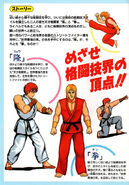
Ryu and Ken flyer.
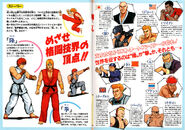
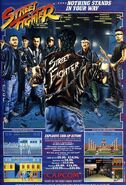
USA flyer for the computer ports.
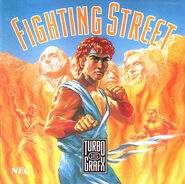
The cover art of Fighting Street (Street Fighter) for TurboGrafx-CD.
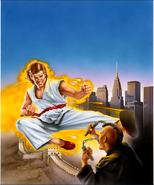
Cover art for Street Fighter [home calculator versions].
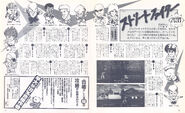
Promotional artwork past Kiyoshi Utata.
Official Art [ ]
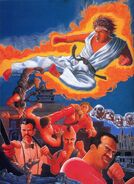
Official SFI Artwork
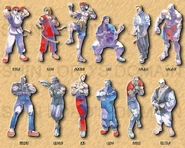
Street Fighter I Character Cast
Original release artwork
Capcom Classic Drove artwork
| Ryu Ken Retsu Geki Joe Mike Lee Gen Birdie Eagle Adon Sagat |
Screenshots [ ]
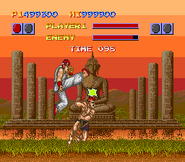
PC Engine CD-ROM² Organization port
Videos [ ]
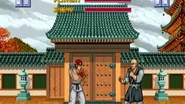
(Demo) ストリートファイター Street Fighter (C)Capcom 1987
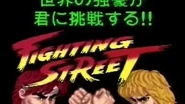
販促ビデオ PCE-CD ファイティング・ストリート FIGHTING STREET TG16 PV
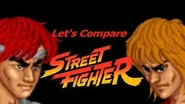
Permit'southward Compare ( Street Fighter )
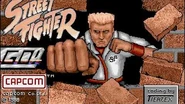
Amiga 500 Longplay 131 Street Fighter
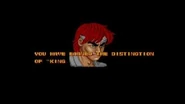
SF i catastrophe
Ending of the original Street Fighter
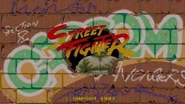
SF1 intro
Trivia [ ]
- Whenever a character wins a round or the match, the victory messages would say "[Grapheme name] won the [round number] circular" and "[Character name] won the fight over enemy," regardless if the game was played in single-thespian style or two-player manner. Starting in Street Fighter II, the victory messages and the Game Journalist would merely say "[Character name] wins" in 2-role player games; in single-player games, the Game Journalist would say "You Win" if the player won the battle, or "You Lose" if the battle was lost.
- Although normally unplayable, the x CPU-controlled characters tin can actually exist selected by the player if a proper hack is performed on the game.
- This is the just mainline Street Fighter game where globe domination was non the plan of the final dominate.
- There is an error in the game's intro screen, where the shape of the wall's hole does not visually match the bricks that have been punched out. This is considering the shape used to be more rectangular in the Beta version and the developers forgot to update animation to fit into the new circular shape.
- In Stephen King's It Chapter Two, 2 children are shown playing this game. Nonetheless, it is shown that Ryu is battling Birdie, which is non possible every bit Ken is the but graphic symbol that could be faced in a two-player game. Later on on in the movie, the main antagonist, Pennywise the Dancing Clown figuratively asks i of the main characters if they would like to play Street Fighter.
- Co-ordinate to the Street Fighter 30th Anniversary Collection, a prototype port for the NES was adult with existing screenshots but was scrapped for unknown reasons. Information technology's also unknown if the epitome however exists even today, something Capcom even highly doubted.
- This is the only mainline Street Fighter game to not receive any kind of remake or new version after the intial release of the game.
- The TurboGrafx-CD port, Fighting Street, is the simply game in the serial to not deport the Street Fighter proper name.
External Links [ ]
- Wikipedia article
- Capcom Database commodity
- Title at Moby Games
- Title at Gamefaqs
| Street Fighter series | ||||
|---|---|---|---|---|
| Video games (Total list) | ||||
| Main games | Street Fighter · Street Fighter Ii (Champion Editon · Hyper Fighting · Super · Turbo · Hyper · Hard disk drive Remix · Ultra) · Street Fighter Alpha: Warriors' Dreams (Alpha ii · Alpha iii) · Street Fighter III (second Impact · 3rd Strike) · Street Fighter 4 (Super · Arcade Edition · Ultra) · Street Fighter V (Arcade Edition · Champion Edition) | |||
| Spinoffs | Street Fighter EX (EX2 · EX3) · Street Fighter 2010 · Street Fighter: The Picture (Arcade version · Home version) · Street Fighter II: The Interactive Pic · Street Fighter: The Storytelling Game · Chun-Li ni makase China · Street Fighter: Puzzle Spirits · Street Fighter: Boxing Combination · Super Street Fighter Four: PachiSlot Edition | |||
| Crossovers | Curiosity vs. Capcom series · SNK vs. Capcom series · Namco × Capcom series · Taisen Net Gimmick Capcom & Psikyo All Stars · Super Puzzle Fighter 2 Turbo · Super Precious stone Fighter Mini Mix · Capcom Fighting All-Stars · Capcom Fighting Jam · Cannon Fasten · Tatsunoko vs. Capcom · Street Fighter Online: Mouse Generation · Street Fighter × Mega Human being · Super Blast Bros. for Nintendo 3DS and Wii U · Street Fighter × All Capcom · Japan Sumo Cup: Yokozuna vs. Street Fighter · Puzzle Fighter · Super Blast Bros. Ultimate · TEPPEN | |||
| Compilations | Street Fighter Anniversary Collection · Street Fighter Blastoff Anthology · Street Fighter Collection · Street Fighter Collection two · Street Fighter 30th Anniversary Collection | |||
| Shared Universe | Final Fight series · Slam Masters series · Rival Schools serial · Captain Commando | |||
| Miscellaneous | Listing of games · List of playable characters · Listing of non-playable characters | |||
| Other media | ||||
| Film/Television | Futurity Cops · Street Fighter II: The Animated Movie · Live-activity film · Street Fighter II: Yomigaeru Fujiwara-kyō · Street Fighter 2 V (Listing of episodes) · US Tv serial (List of episodes) · Street Fighter Alpha: The Blitheness · Street Fighter Alpha: Generations · Street Fighter: The Fable of Chun-Li · Street Fighter IV: The Ties That Demark · Super Street Fighter Iv OVA · Street Fighter - Circular One: Fight! · Balrog: Backside the Glory · Street Fighter: Legacy · Street Fighter: Assassin'southward Fist · Street Fighter: World Warrior · Matador · Street Fighter: Resurrection | |||
| Comics | Street Fighter II (manga) · Street Fighter Gaiden · Street Fighter (UDON) (Legends: Chun-Li · Legends: Ibuki · Outcome 0 · Street Fighter IV Issue two · The Life and Death(s) of Charlie Nash · Street Fighter vs. Darkstalkers) · Street Fighter Alpha (manga) · Sakura Ganbaru! · Cammy Gaiden · World Warrior Encyclopedia (Hardcover) · Ryu Final · Street Fighter Cypher (HK comic) · Street Fighter (Brazilian comic series) · Street Fighter Nil (Brazilian comic) · EX2 Plus (comic) · Street Fighter (Malibu comic) (Result one · Issue 2 · Issue 3) | |||
References [ ]
- ↑ 1.0 one.1 1.2 (Story)
Two young genius fighters "Ryu" and "Ken" who learned various martial arts from an early historic period and finally established their own martial arts style. Both rivals gear up out for the globe of fighting, aiming for the superlative of the martial arts world. Is it "Ryu" or "Ken", who gets the title of "the strongest homo in the world" against street fighters from all over the world who are proud of their superb ability and skill!? ((ストーリー) 幼い頃から様々な格闘技を学び、ついには独自の格闘技スタイルを確立した二人の若き天才格闘家 "隆" と "拳"。ライバルでもある二人は、 ともに格闘技界の頂点をめざし、闘いの世界へと旅立つ。超一流のパワーと技を誇る各国のストリートファイター達を相手に、"世界最強の男"、の名を手中にするのは、"隆"、か、それとも"拳", なのか!?) from the original Street Fighter flyer. - ↑ 2.0 two.1 2.ii Ryu and Ken, seeking to become the "strongest fighter", depart to battle street fighters.(隆と拳、「最強の格闘家」を目指してストリートファイトの旅へと出発する Takashi to ken,`saikyō no kakutō-ka' o mezashite sutorītofaito no tabi east to shuppatsu suru) from Street Fighter Memorial Archives Beyond the Globe
Source: https://streetfighter.fandom.com/wiki/Street_Fighter_(game)

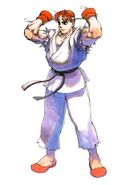
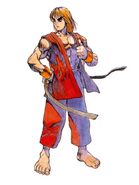
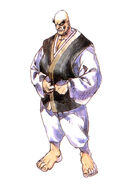
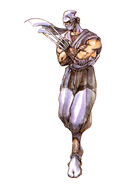
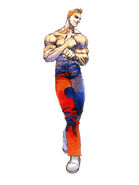
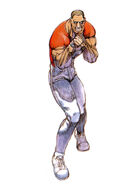
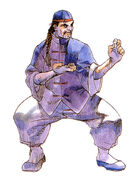
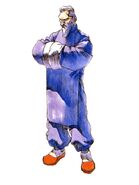
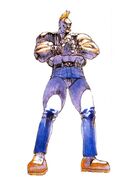
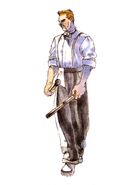
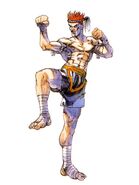
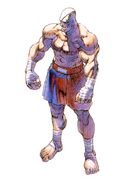
0 Response to "Does the World Martial Arts Tournament Announcer Have an Official Name"
Postar um comentário